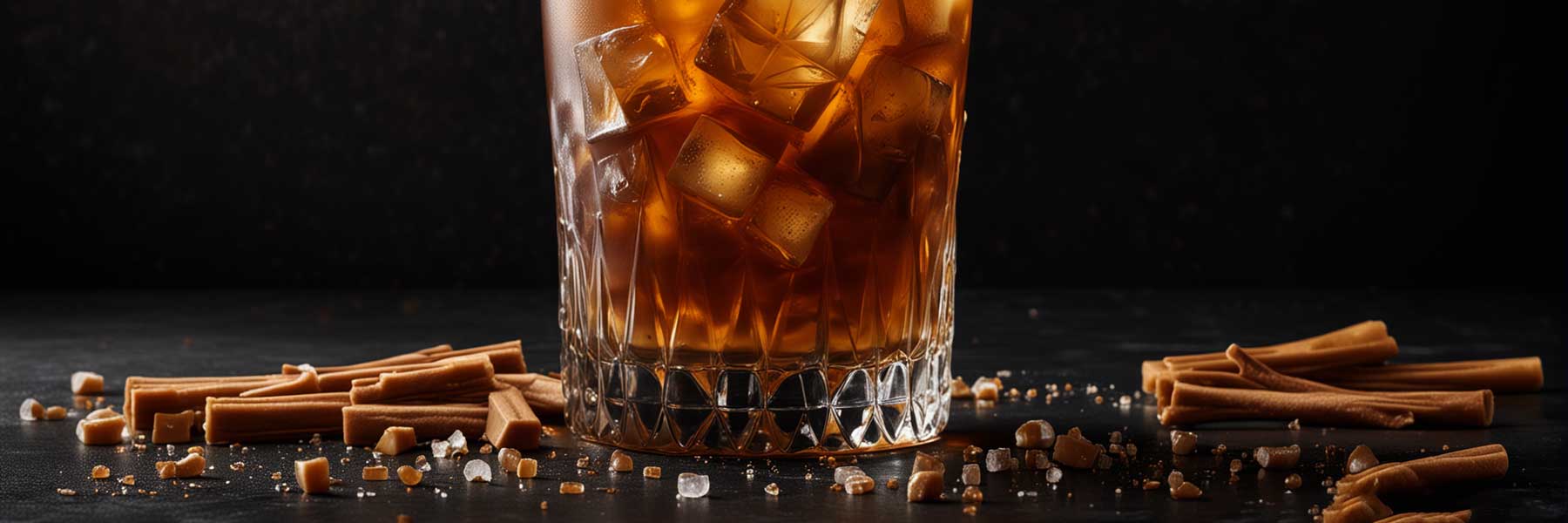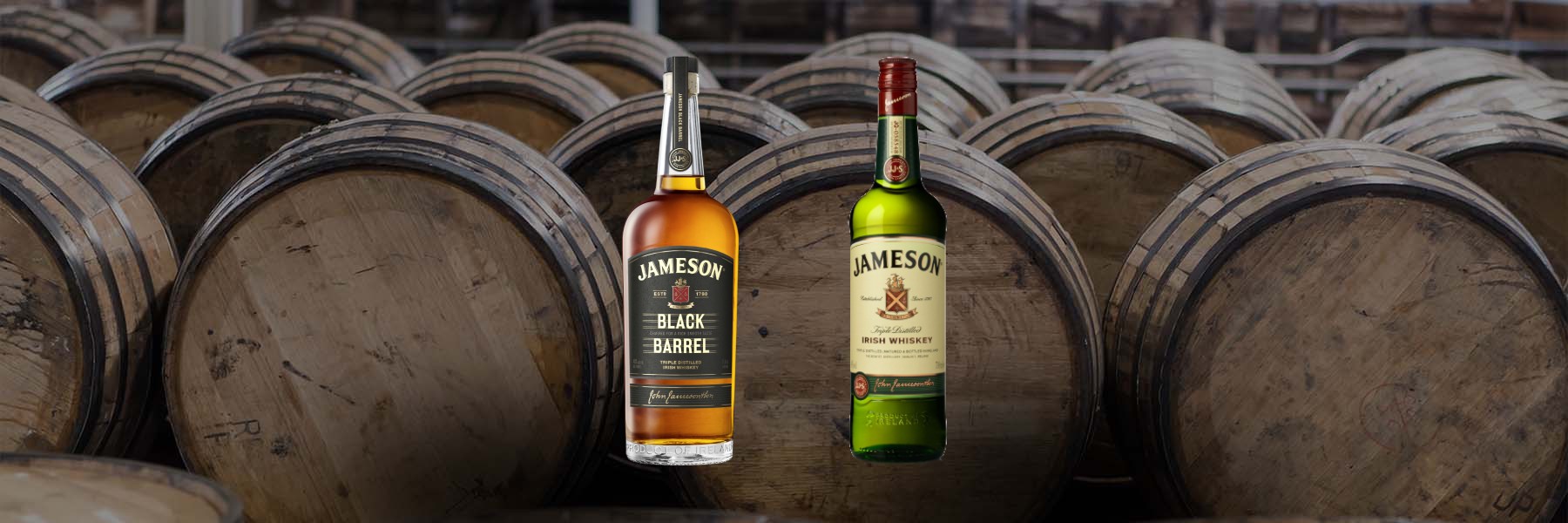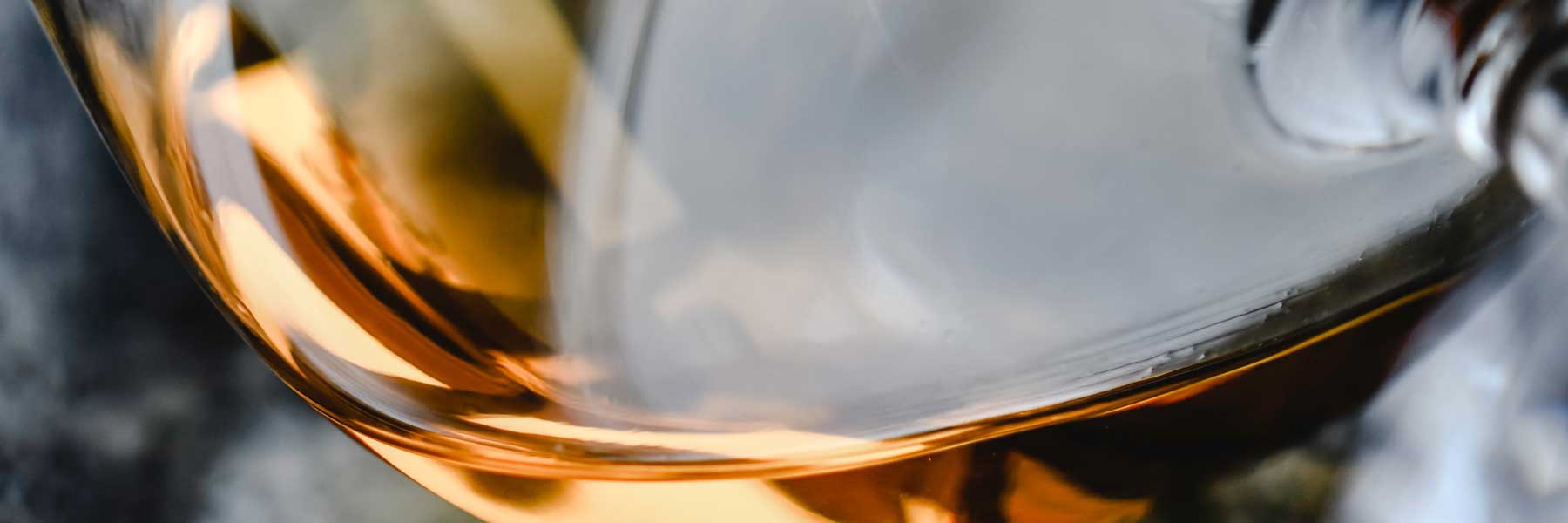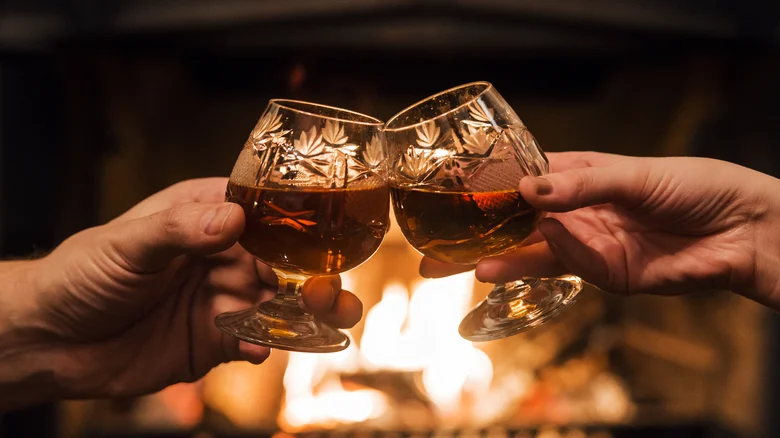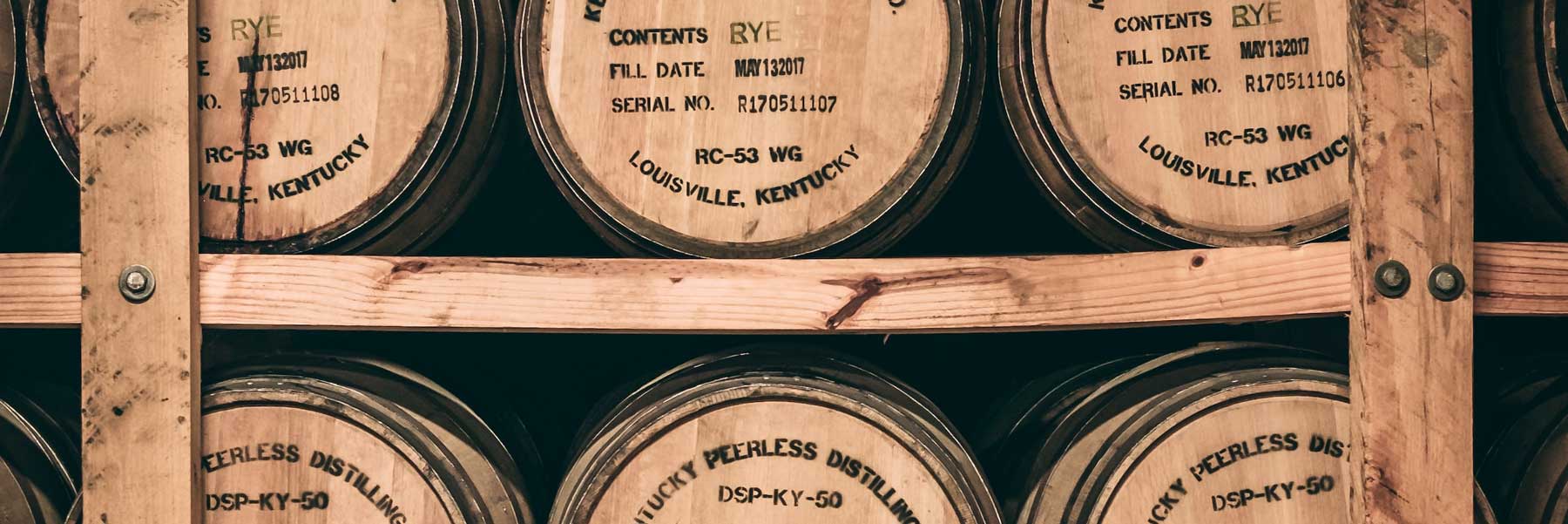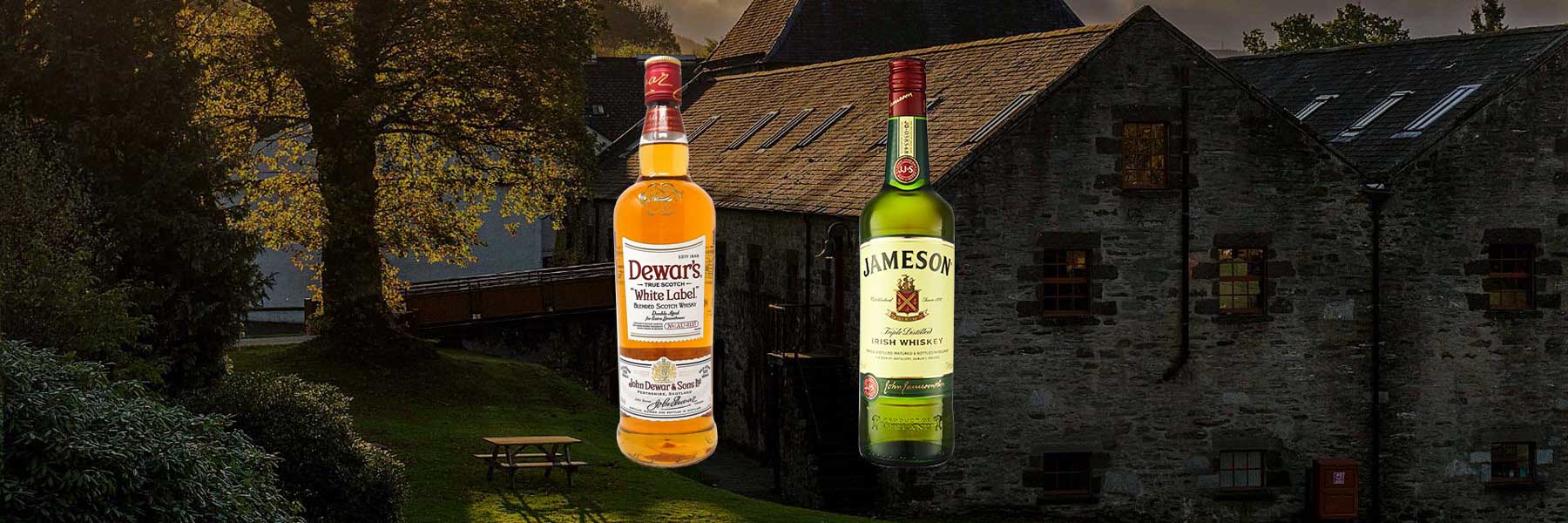What is blended Irish whiskey?
A whiskey made by a single or multiple Irish distilleries which mixes single malt, pot still and/or grain whiskey in any possible combination or proportion of the three. Any of these whiskeys must be distilled in Ireland using either a column or pot stills and be aged for a minimum of three years in wooden casks prior to blending. The minimum required ABV for blended Irish whiskey is 40%.
Compared to single malt or single/pot still, blended Irish whiskey is the most prevalent, accounting for over 90% of the country’s total production.
Blended Irish whiskey may be made by a single distillery which involves blending multiple varieties of their own whiskeys. Alternatively, a blend may be made from whiskeys made by multiple distilleries, combining different types of Irish whiskey for a desired flavour profile.
Let’s take a closer look at how single grain Irish whiskey is made and how it differs from the other three types of Irish whiskey.
What is the difference between single malt and blended Irish whiskey?
Single malt whiskey is produced at a single distillery using only malted barley as its grain, while blended Irish whiskey may contain any combination of single malt, pot still and/or grain whiskey from either a single or multiple distilleries.
Depending on its composition, blended Irish whiskey will usually contain at least one type of malted whiskey (single malt or pot still) with the addition of grain whiskey which is made from other cereal grains such as rye, maize, wheat or oats.
Single malt whiskeys are distilled only using traditional pot stills, whilst grain whiskies are distilled using column stills. To learn more about the different types of Irish whiskey, check out our detailed article on Irish whiskey vs Scotch.
What is the difference between whiskey and blended whiskey?
‘Whiskey’ can be either a single malt, single grain or pot still. ‘Blended’ refers to a whiskey made from multiple types of whiskey mixed together. When someone says they prefer whiskey to blends, this usually means they prefer whiskey made with malted barley.
When describing whiskey, it’s best to signify which type you’re referring to. In the context of Irish whiskey, this can be one of four types.
- Single Malt Irish Whiskey
- Single Pot Still Irish Whiskey
- Single Grain Irish Whiskey
- Blended Irish Whiskey (This article)
Which is better blended or single malt?
Blends can offer a wonderful balance of flavour and complexity thanks to the careful mixing of both grain and malt whiskeys. Unlike single malts or pot still varieties, blends have the advantage of complimenting or contrasting different malts with different grains for a potentially more rounded flavour profile. Blends use the best attributes of each whiskey for a flattering composite, as designed by a highly skilled master blender.
However, there’s a noticeably unfair perception and ‘snob’ culture towards blends that often deems them lower-quality than single malt or pot still whiskeys. They’re commonly perceived as being less ‘pure’ than single malts which typically conjure a more romantic, artisanal notion – coming from a single distillery.
If you’re choosing between single malts and blends, it’s easy to be misled by snob culture, hype and price tags. Single malts generally cost more due to the expensive distillation methods involved. Grain whiskeys (often used in blends) are much faster and cheaper to distil which often reduces the overall price of a blend. (More on that below.)
Saying blended whiskey isn’t as good as single malts is like comparing apples and bananas. They aren’t the same, despite sharing the title of whiskey. Let your personal tastes guide your buying decisions, rather than what’s deemed ‘better’.
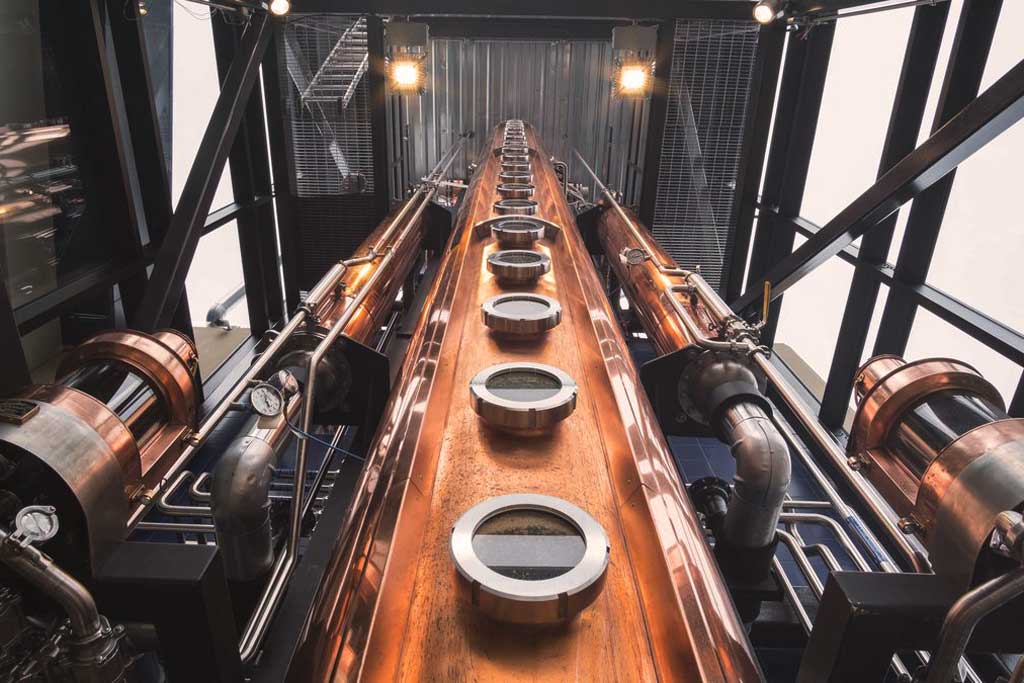
Why is single malt more expensive than blended?
Single malt whisky is often more expensive than blended whisky due to the more costly process of single batch pot distillation. This batch-by-batch and highly labour-intensive method takes more time which is reflected in a higher price tag.
Grain whiskeys (often the major component within a blend) are column distilled which operate continuously. This far more efficient distillation method reduces time and labour, yielding more cost-effective raw grain whiskey.
Creating a blended whiskey requires much less effort by combining two or more complementary whiskeys together. These can be any combination of single malt, pot still or grain whiskeys which makes it an easier (and often cheaper) endeavour overall.
Blends which contain grain whiskey will almost always be inherently cheaper to produce than single malts due to the way they’re distilled.
Are blended whiskeys good?
Blended whiskeys can be exceptionally good and can indeed match or even exceed the drinking experience of single malts – depending on your palate. Sure, they might not have the same romantic artisanal notion as single malts or pot still whiskeys, but there are some very good blends out there to be enjoyed.
The blending process requires immense skill and knowledge which is often overlooked in favour of the more expensive single malts. In some instances, blended whiskey can actually be much more complex – creating different flavour profiles by combining different whiskeys together.
If you’re choosing between single malts and blends, don’t let the price tags sway your decision. Instead, consider what type of taste profile you’re after before investing in any bottle of whiskey. Whether it’s a blend or single malt, it depends on your personal preference – both can offer great tasting experiences.
Why do people prefer single malt?
Preference for single malt whiskeys can be for a number of reasons. Some drinkers idolise the purity of a malt whiskey being made at a single distillery, taking it from grain to a fully aged and tasty dram. Another reason is that single malts only used malted barley which produces its own flavour as determined by the distillation set-up and maturation process.
Single malts aren’t ‘interfered’ with or ‘tainted’ by other cereal grains, therefore are arguably a greater representation of distillery character and maturation style. Malted barely on its own gives a flavour which can be preferred by drinkers over grain whiskey.
Can a single malt be blended?
Yes, single malt whiskeys are often used to make blends. In fact, single malts from multiple distilleries may be combined to create a blend, usually mixed with other grain whiskeys.
Teeling Small Batch Irish blended whiskey combines both single malt and grain whiskeys for a fruity, creamy and spiced flavour. Alternatively, Bushmills Black Bush combines sherry cask finished single malt with grain whiskey as one of their most popular Irish whiskey blends.
Is Irish whiskey always blended?
No. Whilst blended Irish whiskey is by far the most common, it’s made from singular types of whiskey which are uses in it’s blend composition. This can include single malt, single grain or single/pot still whiskey.
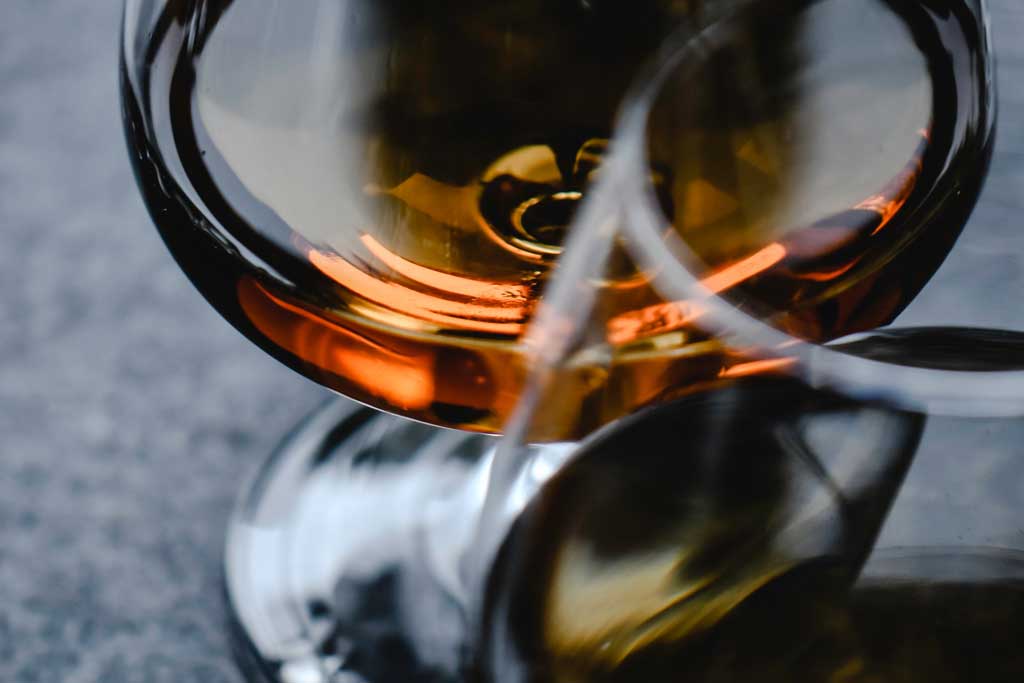
Can you drink blended whiskey straight?
Yes, it’s usually very easy and enjoyable to drink blended whiskey straight (neat) without the addition of any water or ice. They often have a low ABV of 40% and are harmoniously balanced with grain, single malt or pot still whiskeys.
As mentioned earlier, blends often contain column distilled grain whiskey. Depending on the grain being used, this can make them very light and fruity with little harshness prior to ageing. In a blend, this makes them ideal for ‘balancing’ with more potent single malts or spicy pot still whiskies which, on their own, can be unruly and less approachable to drink.
Within a blend, grain whiskeys act like a ‘filler’. Made from maize or wheat, which can be very sweet, they compliment and offset the often boisterous, more punchy flavours of single malts or pot still whiskeys. In your glass, blended whiskey is usually very smooth and easy going when drank straight.
Is there a single malt Irish whiskey?
Yes, there are many single malt Irish whiskeys. After blended whiskey, single malts are one of the most prevalent types produced in Ireland. Single malt whisky is made from a 100% malted barley mash with either double or triple distillation in a pot still. Compared to grain whiskeys, single malts are often aged for longer, giving it more depth of flavour, complexity and colour.
Is Jameson a blended whisky?
Yes, Jameson is a blended whisky made at the Midleton distillery in county Cork in Ireland. It’s blend is made from triple distilled pot still whiskey (using malted and un-malted barley) and column distilled grain whiskey made from Spanish maize. These whiskeys are aged for a minimum of 4 years prior to blending and bottling.
What is the most popular blended Irish whiskey?
The most popular blended whiskeys in Ireland are Jameson, Paddy’s, Teeling, and Bushmills Blackbush. Whilst there are many options for blended Irish whiskey, these are some of the most popular in the market today. Check out our list of the best blended Irish whiskeys below.
9 best blended Irish whiskeys to try
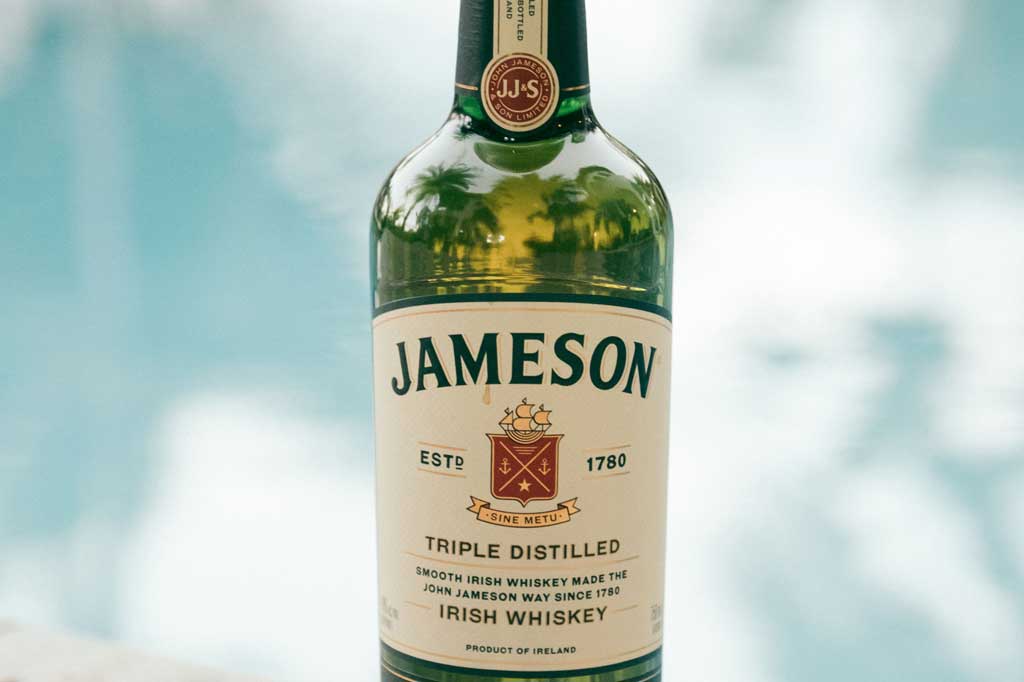
Jameson Irish Whiskey
A blended Irish whiskey distilled from a mixture of malted and un-malted barley, along with maize grain whiskey by the Midleton distillery in County Cork, Ireland. This top-selling, quintessential Irish blend is characterized by its rich aroma and full bodied palate, with notes of marmalade and fudge sweetness, orchard fruits, cut grass, Madeira, vanilla cream, spice and honey. Popular around the world, this is a classic expression of Irish blended whiskey that has won numerous awards for its quality.
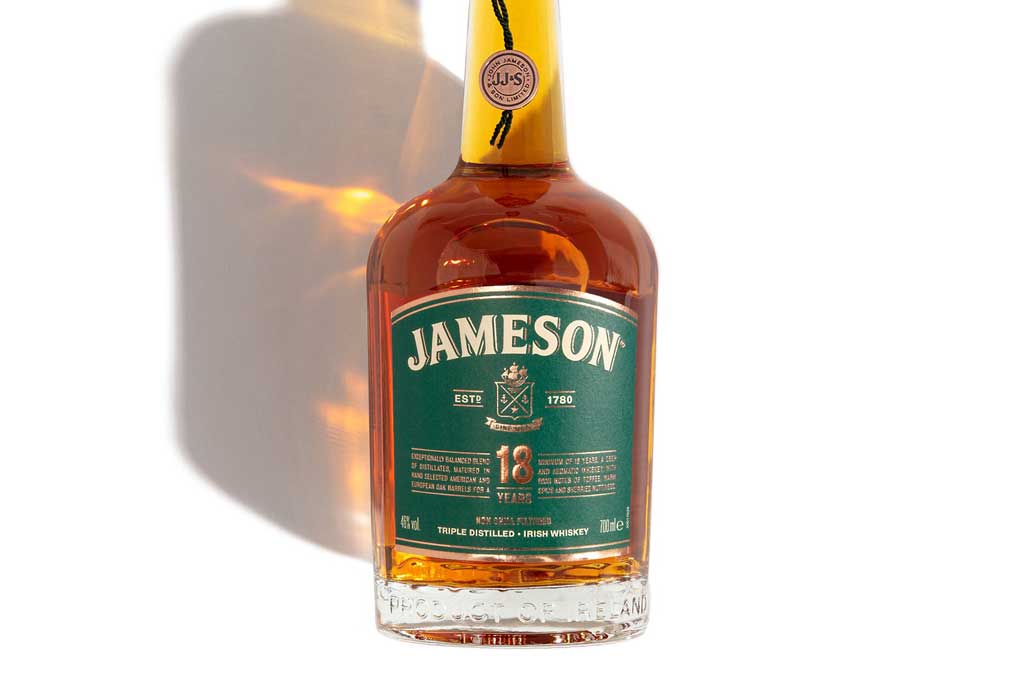
Jameson 18 Year Old Whiskey
A unique blend of two pot-still whiskeys and single grain whiskey, Jameson 18 is aged for 18 years in ex-bourbon and ex-Oloroso sherry casks, then moved to first-fill ex-bourbon barrels for a finishing period before bottling. This aging process imbues the whiskey with complex layers of flavour, including sweet candied fruit, aromatic cut herbs, nutty malt and rum-soaked raisins. Finally, warm toffee notes and oak-y spices linger on the palate for a long finish. A truly special whiskey from Jameson, 18 Year Old is a decadent expression for special occasions.
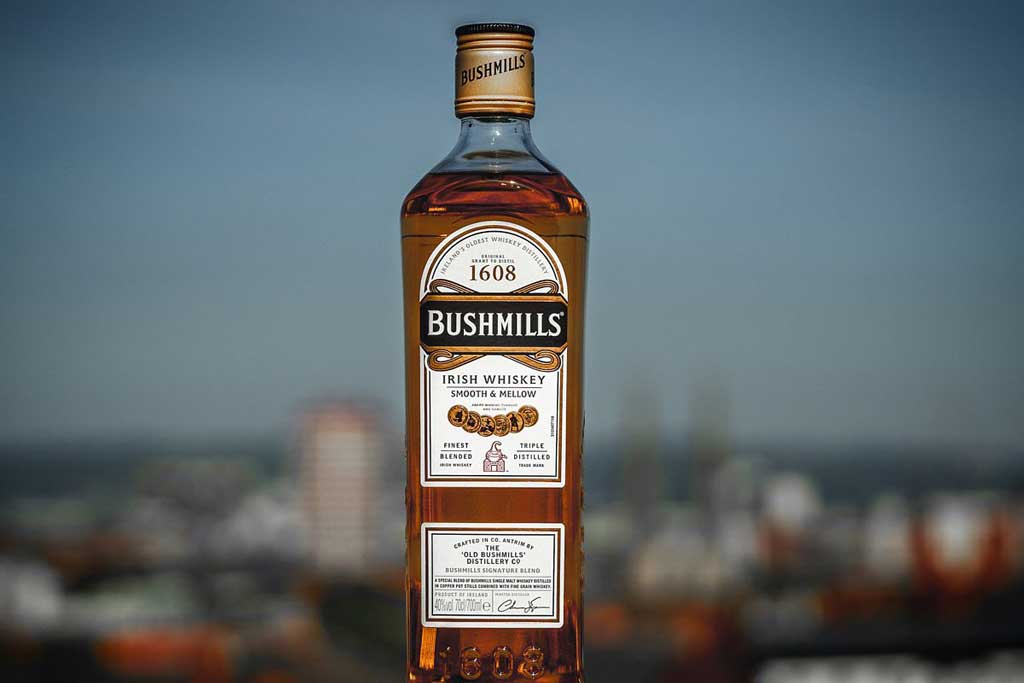
Bushmills Original Whiskey
Another all-time classic Irish blended whiskey made of a blend of grain and malt whiskeys aged for a minimum of five years. This triple-distilled whiskey has an aromatic, fruity palate with notes of salty butter, sweet vanilla cream, citrus, and light floral blossom. It’s smooth and easy to drink, making it a great value-for-money option for any whiskey lover.
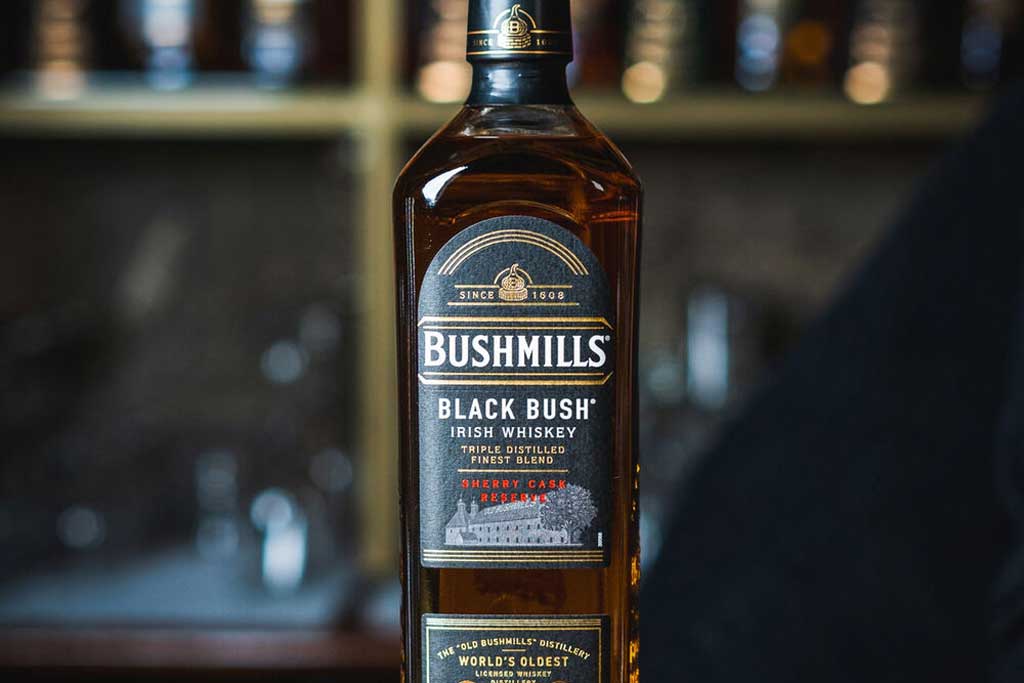
Bushmills Black Bush Whiskey
Broodier and sweeter than the Bushmills Original, this blended Irish whiskey combines sherried malt whiskey and grain whiskeys. It has a decadent flavour profile, featuring notes of creamy vanilla and sweet milk bottle candies, along with dried fruit peels, chamomile tea, and cinnamon spices. The whiskey is best enjoyed neat or on the rocks, but can also be used to make classic whiskey cocktails that benefit from fruit sweetness.
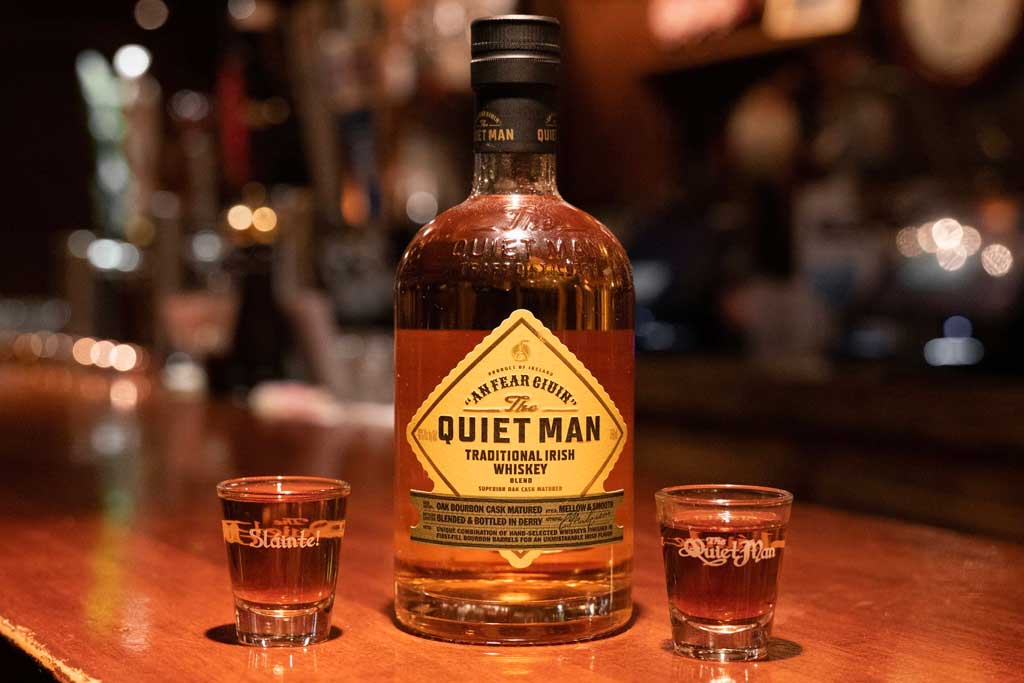
The Quiet Man Blend Whiskey
The first whiskey to be bottled in Derry, Northern Ireland, for more than 100 years. This Irish blend is made with a high malt mash and finished in first-fill bourbon barrels, giving it a creamy vanilla, toasted cereals, honey, and marmalade taste. This whiskey has rich flavour notes and subtle nuances that make it an ideal choice for sipping neat or enjoying in cocktails. It’s smooth yet complex palate pairs perfectly with many ingredients which makes it the perfect choice for any occasion.
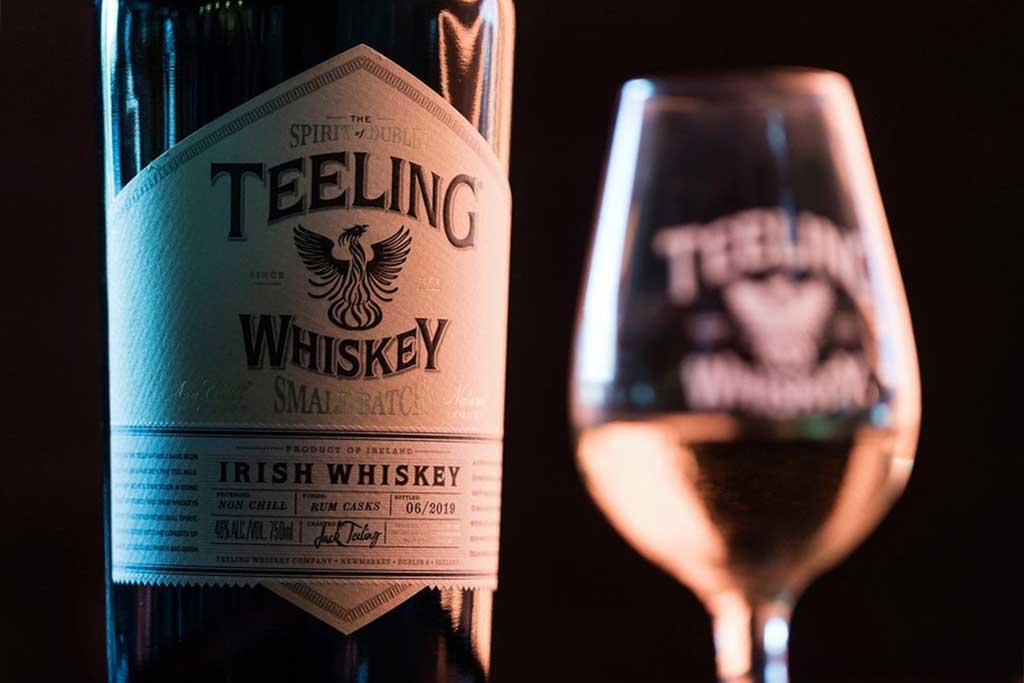
Teeling Small Batch Whiskey
An assertively spiced Irish whiskey, Teeling Small Batch is a warming blend of malt and grain whiskeys. Initially matured in ex-Bourbon barrels, it’s then finished in former Central American rum casks. This whiskey has an ABV of 46%, without the use of chill-filtration, giving it a natural colour imbued from the double cask maturation. The palate showcases an array of lively spiced, rich notes like rose petal jelly and lemon curd, as well as creamy vanilla and hints of dried herbs and cinnamon. A wonderful dram full of spice and fruit.
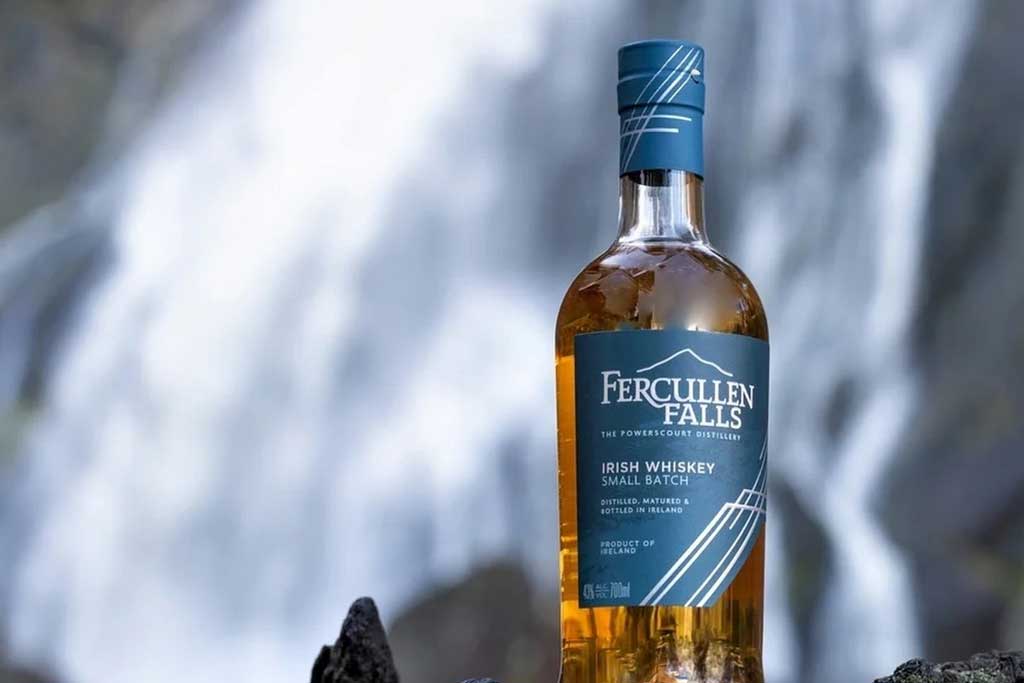
Fercullen Falls Small Batch Blended Irish Whiskey
If you have a sweet tooth, this is a delicious whiskey produced by the Powerscourt Distillery in Enniskerry, County Wicklow. With an equal blend of 50% malt whiskey and 50% grain whiskey, it’s aged in a combination of ex-bourbon casks and new heavy char oak casks. This yields a sweet flavour with notes of vanilla, citrus, pepper, cloves, and orchard fruit. Perfect for sipping neat or adding to cocktails, this whiskey offers a sweet, soft experience that’ll tantalise your taste buds.
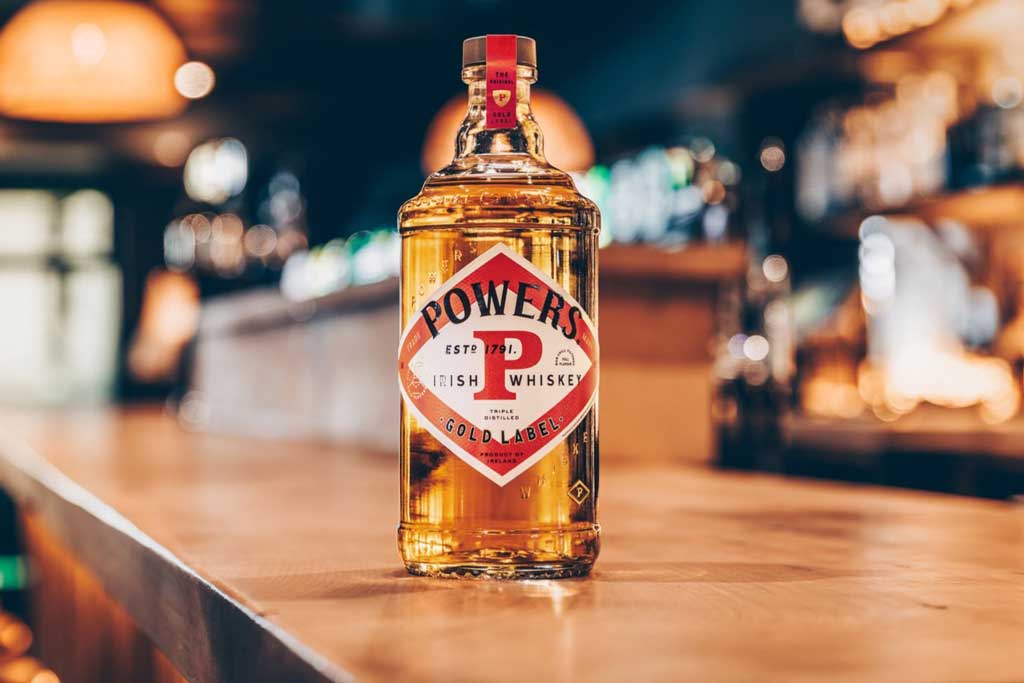
Powers Gold Label Whiskey
A staple Irish blend of pot still and grain whiskeys, Powers Gold Label has a velvety texture and rich aromas of buttery shortbread, cereal, pears and milk chocolate. Quintessentially Irish, this whiskey is triple distilled for maximum purity. It’s lengthy maturation in oak casks produces notes of caramel, sherry and oak that linger on the palate. Powers Gold Label Whiskey is one of Ireland’s signature blends, offering a smooth yet complex taste that leaves you wanting more.
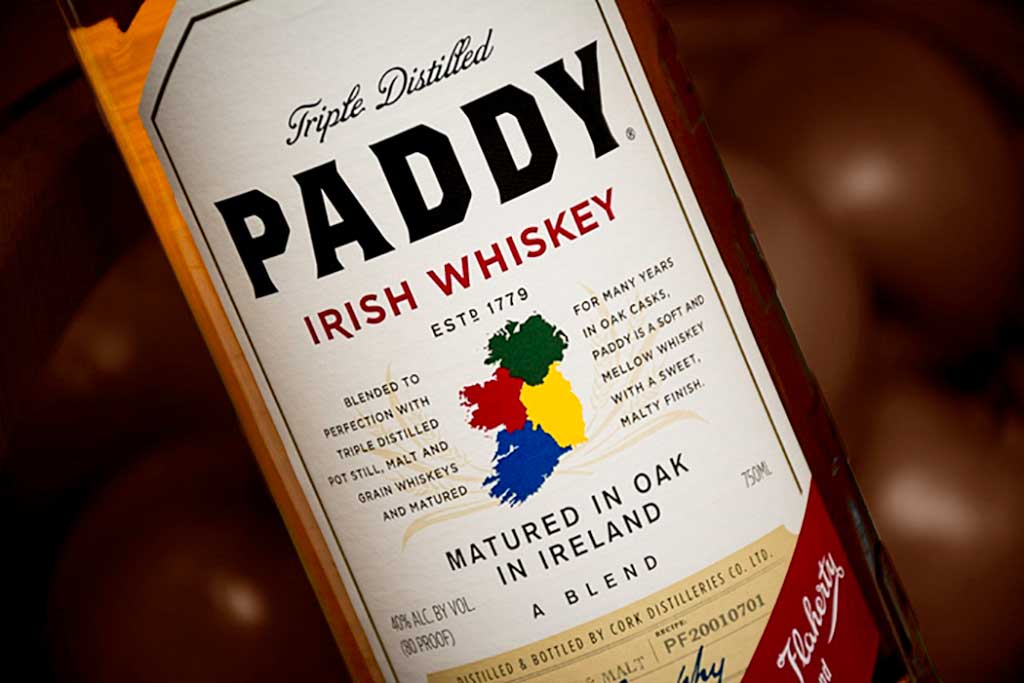
Paddy Irish Whiskey
A popular but unusual blend of three types of Irish whiskey; single pot still, single malt and grain. First produced in 1779, Paddy Irish Whiskey is a triple distilled blended whiskey produced at the Midleton Distillery in County Cork, Ireland. On the palate, this whiskey offers notes of toffee, cereals, rosewater, butterscotch and vanilla. It is an ideal choice for those looking for a smooth and balanced spirit that balances the the three pillars of traditional Irish whiskey.
Conclusion
Blended Irish Whiskey is ever popular and it’s easy to see why – combining smooth grain whiskey with powerful single malts make for an accessible drink that you can enjoy without water or breaking the bank. There are many different styles to explore so why not try some of our suggestions above?



